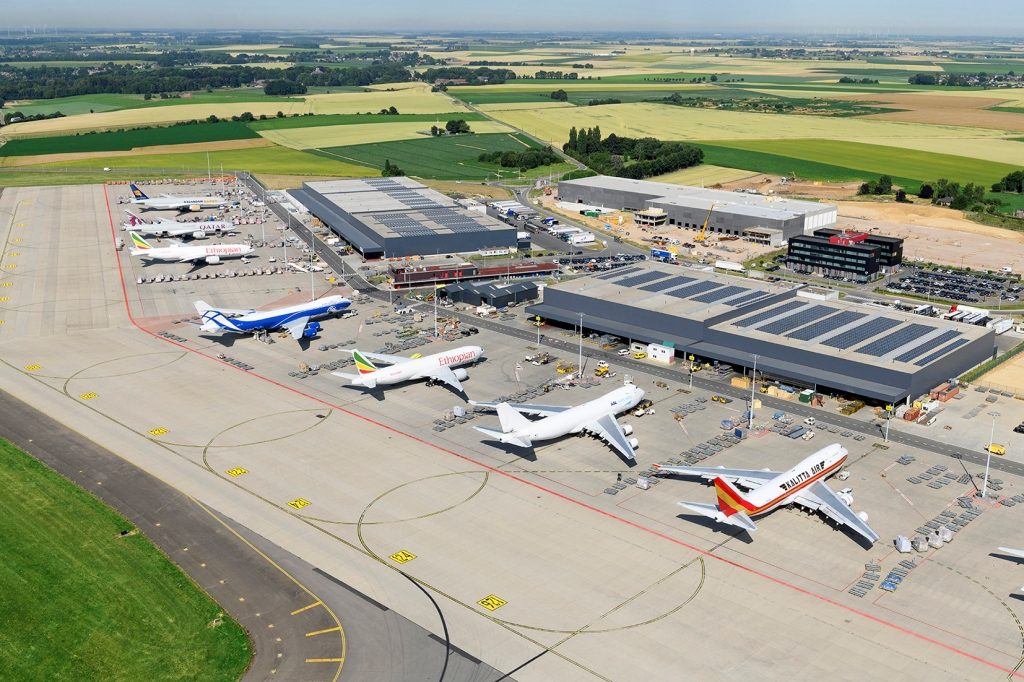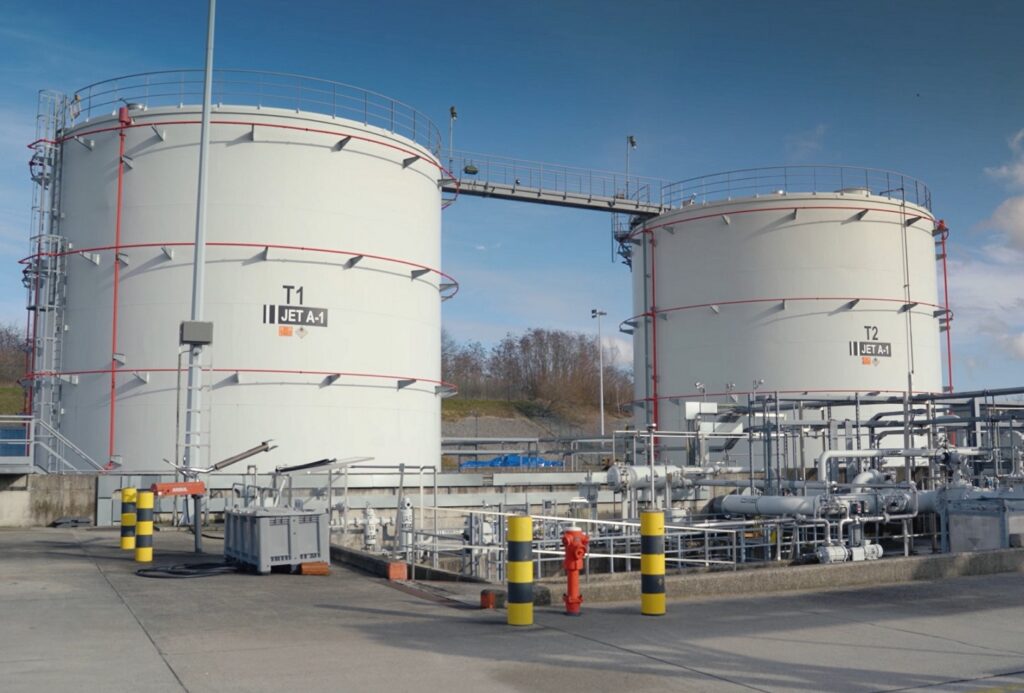Liege goes for growth
04 / 12 / 2023

Frederic Brun. Photo: Liege Airport
Liege Airport is on a growth mission and head of commercial Frederic Brun has taken on the challenge.
Airports should step up their efforts in the air cargo supply chain and actively communicate with other stakeholders, otherwise, they could lose their worth.
Historically this is something airports have fallen short of, according to Frédéric Brun, head of commercial, Liege Airport.
But they can no longer think of themselves as an independent party within the air cargo industry, he says.
“I think that airports are now understanding that it is a puzzle, where you have to integrate and connect people because at the end of the day, aviation and logistics is a people industry.”
Better communication with other air cargo stakeholders can help facilitate business and develop more sophisticated supply chain networks, Brun points out.
“The fascinating part of working for an airport is you have to consider yourself as a marketplace, introducing everybody, connecting the dots and trying to create opportunities for everybody,” he explains.
Brun’s background works as an asset in this respect. Having joined Liege one year ago, his previous experience in the freight forwarding industry has given him a grounding in understanding the needs of forwarders and airlines, and what they want from an airport.
“Being able to use freight forwarder terminology and to have an understanding of their needs is important.
“We aim to connect with freight forwarders and ask questions to see how we can help them. I want to add value, and for them to have a sustainable business.”
“Because we are not only a landing strip. We really can create value for our customers,” he declares.
From sea to air
Brun began his career in logistics via retail. After completing an undergraduate degree in Business Administration, he carried out an internship at DIY retailer Adeo Group, working as an assistant logistics manager in the Canary Islands.
“This is where I experienced logistics for the first time, with the pressure of shopping, promotions, late deliveries, customs inspections etc. And I thought it was really exciting.”
This prompted him to undertake a master’s degree in logistics and international transport, after which he began working in seafreight, with a job at Maersk, initially as a booking agent, then in business development.
He subsequently began honing his forwarding skills by moving onto a business development manager role at Rhenus Logistics, and then trade lane manager at DB Schenker, before joining DSV where he spent nine years in route and business development before leaving to join Liege in November last year.
He says the sense of urgency drove him to pursue further career opportunities in this field of logistics.
“This is what keeps you on your toes – this excitement of not knowing what will happen today. You have a plan but at the end of the day the plan can vanish in an emergency when you have to make immediate operations or commercial decisions.”
Both seafreight and airfreight are complex, but the speed of airfreight means there is more pressure to think fast, he reflects.
“This is what makes it a little bit more tricky, because it’s immediate, no mistakes are allowed.”

Photo: Liege Airport
Airport stakeholders
Liege is tackling a tough post-pandemic market. This year alone it has had to contend with a sustained lack of air cargo demand for many months, but Brun was keen to take on a new challenge, and was familiar with the airport through his previous forwarding work.
This year’s demand challenges followed a steep drop in air cargo volumes in 2022, which saw the airport handle 1.1m tonnes of freight, 19.3% down on the 1.4m tonnes processed in 2021.
The decrease followed a pandemic boom era when the airport benefitted from a rise in the use of freighters to transport cargo due to reduced bellyhold operations and a rise in e-commerce.
Then the airport took a hit with the resumption of bellyhold operations to other airports, TNT (due to be absorbed into FedEx Express) reducing activity at its hub at the airport, the loss of Russia-based AirBridgeCargo due to restrictions related to the war in Ukraine, the impact of inflation on consumer spending, and a modal shift from air to sea transport.
Brun admits that Liege felt the loss of AirBridgeCargo, which previously used Liege as its European hub and in 2018 had signed a lease agreement for 10 years, when the airline stopped operating following the start of the Russia-Ukraine conflict.
“We lost 20 rotations from one day to the next – 100 tonnes each way.”
But Brun believes the airport is doing well in the context of a cargo airport among current market challenges.
“We have tackled challenges by having an aggressive strategy focusing on building relationships with freight forwarders to build up business.”
Around 30 cargo airlines currently serve Liege on a schedule or charter-basis.
This year, Liege has secured business from several new airlines as it strives to transition from being seen as an e-commerce specialist.
MSC Air Cargo adopted Liège Airport as its European hub last year, beginning operations in November.
Partner airline Atlas Air is operating Boeing 777-200 freighter flights on behalf of the shipping company, on routes between China, the US, Mexico and Europe.
“Soon the third aircraft of this type will begin operating and in the first quarter of next year there could be five aircraft. There has been enormous growth and the operation is adding a lot of volume to the airport,” Brun says.
Additionally, in March this year, Air Canada Cargo began operating Boeing 767F flights from Toronto to Liege, via Halifax, and now has three services a week.
And FedEx also recently confirmed it would establish an intercontinental air cargo hub for Europe at the airport. The air cargo hub will connect with FedEx’s Arnhem and Venlo road hubs.
Cainiao and Amazon both have e-commerce operations at Liege, but Brun says there is a misconception that e-commerce dominates operations, when in fact the vertical represents just 7-8% of the total volume at the airport.
“E-commerce is a super business opportunity but at the end of the day it is only one part of the entire puzzle,” stresses Brun. Liege is therefore keen to be seen as an all-rounder.
Other strong and growth verticals include pharma – both DHL and Kuehne+Nagel have pharma hubs onsite, and perishables – flowers in particular, for which LATAM is a major carrier.
Animal transport is also thriving, with Etihad and Emirates both major customers. Helped by its onsite Horse Inn facility, last year Liege handled over 7,000 horses.
There’s also a split geographical reach. 30% of total volumes are from the Americas, 30% from Africa, and 30% from Asia.
Though it’s unclear how the air cargo market might perform in the first half of next year, China, India and Latin America may be real growth areas, Brun predicts.
Major expansion
Growth is also expected as a result of Liege’s expansion plans.
As part of the of €500m master plan “Vision 2040” the airport aims to double the capacity of first line cargo handling space in the next 10 years.
“We are going to have a development of nearly 40,000 sq m in phase one. Also 15 additional wide body parking stands will be added and the existing runway system will be upgraded.
The airport is currently working with Weerts Group to develop a 255,000 sq m second line warehouse park called Cargo City West.
This will be useful for “build up and consolidation, and also integrating multimodal shipments because we have rail goods that are arriving right behind the airport,” Brun points out.
The airport is also close to Liege Port. Both the port and airport are part of a free trade zone.
“The second line warehouses will enable freight forwarder to carry out ground tasks in one area, within the same customs zone.
“Now the pressure is on to fill all that capacity that will be enabled in the coming years.
Slot restrictions
Liege has the room and the investments to expand, the only barrier has been in the form of environmental legislation.
However, Liege Airport believes the 20-year environmental permit, set at 55,000 movements per year by the Walloon Government in January, would still allow it plenty room for growth.
“Today, the airport is having 25,000 movements. So 55,000 means you can more than double capacity,” said Brun.
This is despite Liege Airport’s 2020-2040 master plan, which foresaw 67,000 movements at its peak and no limitations on night flights.
But the 55,000 movements set in January is a more favourable outcome than the maximum limit of 50,000 aircraft movements per year for aircraft over 34 tons set by the original permit.
The permit also won’t restrict small aircraft operating, such as those used by FedEx.
“This permit is a very good one for us. Because there is no noise restrictions, we don’t have NOx (Nitrogen Oxides).We don’t have a curfew. The only challenge we have is with the 747-400F that won’t be able take off in the night as of 2030 only,” said Brun.
Although the 747-400F has a limited lifespan remaining, he points out.

SAF facility. Source: Liege Airport
Sustainability
On the subject of the green-focused permit, this year, Liege Airport is now offering Sustainable Aviation Fuel (SAF) to its airline customers after it became connected to the CEPS pipeline system.
That said, Brun admits there is still much work to be done in developing SAF services, and the airport hasn’t yet got a solid picture of how much demand there will be with regular users.
In support of its zero-carbon emission by 2030 goal, the airport is also using solar panels on some of its buildings, while the majority of its ground vehicles are electric.
The airport is also putting its digitalisation strategy into action to minimise shipment movements onsite to reduce ground equipment vehicle emissions and improve efficiency.
Future in freight?
With decarbonisation and growth on the agenda, there is undeniably lots to juggle, although Brun isn’t put off by the challenge and sees a firm future in logistics.
“As the head of commercial, when you turn 40 you’re becoming suddenly very exposed and there are more career opportunities.
“But there are always opportunities within the airport. I’m having so much fun and enjoying the work we are doing, and the team that we have built with its core knowledge – it’s fantastic.”
He adds: “For the next 20 years we have a permit and half a billion euros to increase the capacity around the airport, what else could we want?”













